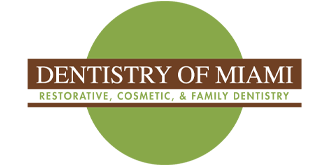An essential element of effective endodontic care is ensuring the thorough irrigation of treatment sites. Irrigation is a process that moves irrigation agents to the site to remove debris and eliminate any infection as part of the cleaning process. The more effectively this process can be performed, the lower the risk of complications. Any remaining infection or bacteria can lead to reinfection of the site. Using more advanced irrigation methods has resulted in a marked decrease in complications.
Irrigation Agents Used in Endodontic Care
It’s essential to remove any present bacteria to prevent their regrowth in the root canals. Accomplishing this has been accomplished through the use of advanced irrigation systems. These systems are essential in successfully disinfecting the treatment site to permit the successful application of treatments. The best systems for irrigation are non-allergenic and non-toxic in nature, utilizing an antimicrobial approach that is capable of eradicating endotoxins and dissolving pulp tissue. These criteria were at the heart of the creation of numerous irrigation agents now used in dental practices. The following irrigation agents represent the standard of current endodontic care:
- NaOCL: Also known as sodium hypochlorite, this is the gold standard of irrigation agents. It can remove both necrotic tissue and eliminate bacteria while dissolving vital living pulp. This ensures the root canal is entirely sterilized and ready for restoration.
- EDTA: This substance’s full name is Ethylenediaminetetraacetic acid. It is generally used in conjunction with NaOCL. This is due to its ability to remove calcium and dentin that has become demineralized. It also serves as an effective lubricant and can eliminate plaque and tartar within the root canal.
- CHX: This irrigation agent is known as chlorhexidine gluconate. Its inclusion in irrigation is due to its ability to eliminate bacteria by breaking down their cell walls. It also binds to dentin, allowing the protection it offers to linger for months after treatment.
These irrigants are made even more effective through the application of one of a variety of modern irrigation methods.
- Passive Ultrasonic Irrigation: This process was developed to improve the cleaning effectiveness of the irrigants used. This is accomplished through the use of ultrasonic waves that push the agent into even hidden canals. This ensures thorough cleaning of the interior of the tooth.
- Intermittent Passive Ultrasonic Irrigation: This ultrasonic irrigation method still uses a cannula and syringe method to clean the interior of the tooth. Intermittent bursts of ultrasound are administered through a special tip to stimulate the agent. This stimulation activates it and enhances its effectiveness.
- Continuous Passive Ultrasonic Irrigation: This form of irrigation makes use of a process called acoustic microstreaming. This method emits an ongoing stream of ultrasonic waves through a uniquely designed irrigation tip.
These methods all share the use of chemical agents in common. These agents work together to thoroughly cleanse the canal system and remove any unwanted tissues. This process prepares the tooth for sealing and reconstruction. Your endodontist can tell you more about these procedures the role they play in your oral health.


